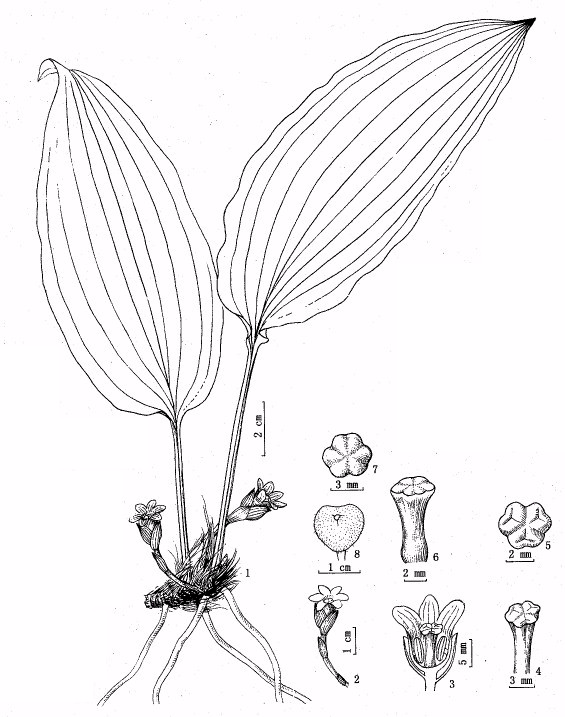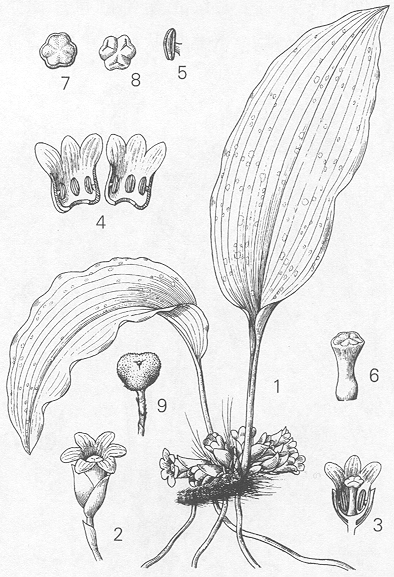.
Aspidistra saxicola
| Accepted name | Aspidistra saxicola Y.Wan. Guihaia, 4(2): 129, fig. 1. (1984). |
| Synonyms | |
| Distribution | China (WC Guangxi) |
| Description | Rhizome: shortly creeping, subterete, diameter 5 - 7 mm. Leaves: solitary to ca. 35 cm; cataphylls short; petiole 5 - 14 cm, rigid; leaf blade green slightly with hazy yellowish white spots, elliptic to elliptic-lanceolate, 12 - 23 cm long x 4.5 - 7(- 9.5) cm wide, ± bent at junction with petiole and held horizontally. Peduncle: erect, usually 2 - 5-tufted, 0.5 - 2.5 cm long with 4 - 6 bracts the top two enlarged ca. 2 cm long x 1 cm wide and ± enclosing the perigone tube; flowers solitary. Perianth [Perigone]: campanulate ca. 1.8 cm long x 1.4 cm diameter; tube 8 - 10 mm long x 6 - 7 mm diameter, inside dark glossy purple to below insertion of anthers then white, outside glossy cream speckled with dark purple below lobes shading to cream at base; lobes 6 in 2 pseudo-whorls, glossy purple, ± erect, broadly ovate, 4 - 6 mm long x 4 - 6 mm wide, adaxially with 3 channels the central one extending to the insertion of the anther, the two side ones extending to the base of the lobe. Stamens: 6, inserted at mid-point of perigone tube, subsessile; anthers oblong, ca. 4.5 mm long x 1 mm wide, filament at mid-point of stamen. Pistil: obconical or trumpet-shaped ca. 7 - 9 mm long; style ± cylindric at base ca. 1 mm diameter, the basal 2 mm cream then dark purple and widening gradually to a slightly enlarged 3-lobed stigma ca. 5 mm in diameter, the lobes emarginate resulting in 6 shallow marginal lobes, the adaxial surface EITHER with 3 long radial grooves (ridges?) marking the lobes and short bifurcated grooves (ridges) within each lobe OR with 6 long radial grooves and a slightly raised margin OR dark purple, papillose, slightly concave with 3 inwardly curved ridges close to the lobe margins; ovary enlarged ca. 2 mm diameter, white speckled very faintly with purple. Fruit: berry dark purple, trigonous globose, 1 - 1.4 cm in diameter, tuberculate. Phenology: flowers October [also January - February]. 2n = 36 based on FoC, Li Guangzhao 2004 and Tillich 2005 & personal observations. |
| References | |
| Comments | The plant sold as Aspidistra punctata 'Come Here Spot' by Plant Delights and others is Aspidistra
saxicola.
|

